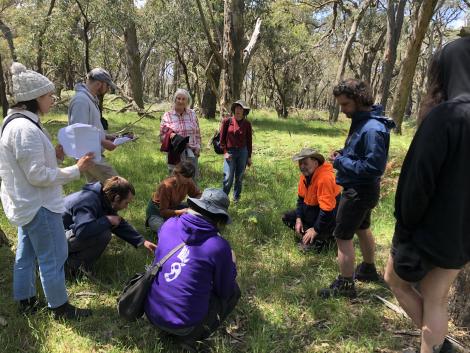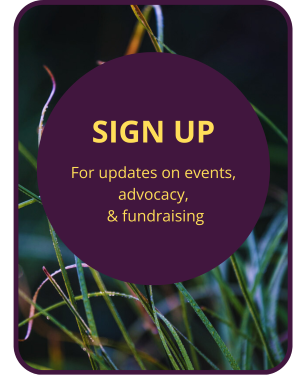Paul Piko lives in Hidden Valley, a residential village and bushland area in the Upper Merri catchment on the northern edge of Melbourne. Paul is an orchid expert and Chairman of the Hidden Valley Environment Subcommittee, which formed in 2023 to support the work of the Wallan Environment Group and to protect the bushland in Hidden Valley.
Favourite spot in the Merri Creek catchment?
My favourite place in the Merri Creek catchment has to be the remnant bushland in the north section of the valley, which we unofficially call the Hidden Valley bushland reserve. The gullies feed into Mittagong Creek which in turn flows towards Merri Creek, not all that far from its source. When I moved into Hidden Valley I was delighted to discover this seemingly forgotten woodland. I was already an orchid enthusiast and was pleased to document a good number of species there, including one listed as Threatened. With the help of Chris Cobern from MCMC, we’ve also confirmed this bushland is also home to the Brush-tailed Phascogale. It is a special place.

What inspired you to get involved with the Hidden Valley Environment Subcommittee?
Flora and fauna surveys of Hidden Valley (which were started when the development began in 1999) were made public just in time, when the developers put it up for sale – they revealed the merits of the bushland. Those surveys, along with other recently recorded observations, played a big part in the developers passing a large portion of the bushland to Mitchell Shire.
Meanwhile, Hidden Valley was being developed as a “mini-Tuscany”. Some of us felt that attitude could mean loss of the natural habitat that still exists. We felt it essential to raise awareness of our indigenous biodiversity within the community to build up support, and to protect and strengthen the remaining bushland.
Wallan Environment Group (WEG) had been active in Hidden Valley for many years, including the Hidden Valley Rail Reserve, an old railway line being turned into a well-maintained public reserve. With the Rail Reserve, bushland reserve and other green spaces, we thought there was enough work for a Hidden Valley Environment Subcommittee as well.
Can you share a moment in the Merri Creek catchment that inspired you to keep on with your volunteer work?
As a member of the Australasian Native Orchid Society (Victoria), I had attended many field days searching for and studying orchids. One species, Spotted Hyacinth Orchid, (Dipodium pardalinum) occurs mainly in the west and central regions of Victoria. Orchids have a limited flowering period, and Dipodiums are leafless, so timing is crucial to seeing them. Not every plant flowers every year. There is no visible sign of a Dipodium until the stalk breaks the surface. Spotted Hyacinth Orchid had been recorded at Macedon and the north-eastern suburbs of Melbourne, so I went searching in my local area. I recognised it at Kilmore’s Monument Hill, and I feel that its presence contributed to the rejection of the Kilmore Bypass option that was proposed to go through the reserve.
Tell us why you joined the Australasian Native Orchid Society (Victoria)?
My older brother and I were keen photographers and interested in nature. We came up with the idea to challenge ourselves to take good photos of orchids in the field. We knew little about orchids but that was part of the challenge: learning about them and getting an understanding of the various species; how they grow and when they flower.
I joined the Victorian section of the Society and found a community that has a huge commitment to education and conservation. They don’t just grow orchids to put in a show; they run activities across the state, helping research orchids, maintain sensitive sites and participate in recovery projects, according to regulations and in collaboration the appropriate authority, since orchids are protected species.
My brother and I became very active in the Society and when my brother died, the Society’s annual Victorian field orchid photo competition was named after him, with one of his photos as a perpetual trophy.
What is the achievement you’re most proud of through volunteering?
The number one achievement is the saving of the Hidden Valley bushland reserve in November 2024. It came close to being lost to development but the efforts of multiple volunteers have protected it. We were pleased to find out recently that the reserve has been handed over to Mitchell Shire Council to be managed by them as a reserve. (We’re waiting for a formal announcement but are thrilled to know it’s in good hands.) It can now continue to be a haven for our indigenous flora and fauna, both the common and the threatened. It is reinvigorating to visit the bushland – see the vegetation change each season, hear the plethora of woodland birds, catch a glimpse of a wallaby – and feel comforted that there are special creatures and plants, usually out of sight, that make this their home.





 Merri Creek Management Committee. 2 Lee St, East Brunswick, Victoria, Australia 3057
Merri Creek Management Committee. 2 Lee St, East Brunswick, Victoria, Australia 3057